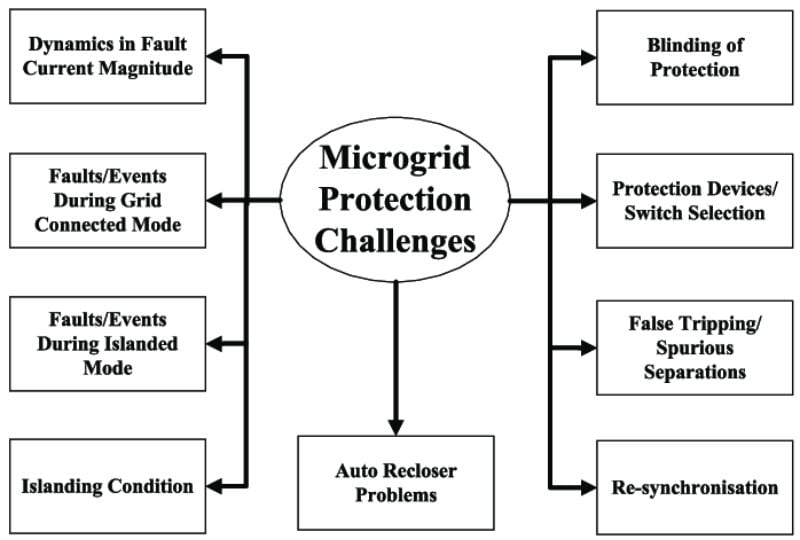Self-Healing Microgrids: Sandia’s Innovative Methods for Load Shedding and Fault Isolation
Research at Sandia National Laboratories proposes prioritized undervoltage load shedding and undervoltage-supervised overcurrent for fault isolation.
As the existing power infrastructure integrates renewable energy sources, microgrids have emerged as a promising technology. Energized by multiple inverter-based distributed energy resources (IBDERs), microgrids hold promise for a renewable future but face many legitimate challenges.
Microgrid for military facility. Image used courtesy of National Renewable Energy Laboratory
Researchers from Sandia National Laboratories are using local measurements to address some challenges in self-healing microgrids. Exactly what are these challenges, and how is the Sandia team solving them?
Challenges Facing Microgrids
Microgrids are small-scale power networks capable of operating independently or in conjunction with larger grids and often incorporate renewable energy sources connected to the grid by inverters that convert the direct current into alternating current.
Challenges in microgrid protection. Image used courtesy of Altaf et al.
The renewable energy variability and intermittency, combined with the decentralized nature of microgrids, create unique challenges in maintaining stable and reliable power. Traditional power grids rely on centralized control and communication systems to manage loads and respond to faults. However, in microgrids, especially those heavily reliant on IBDERs, these centralized systems may not be feasible due to high costs, reliability issues, or complexity in integration.
The challenge is further compounded by the need for microgrids to quickly isolate and recover from faults to maintain a continuous power supply. This requires sophisticated protection mechanisms capable of rapidly detecting and responding to issues like overloads or equipment failures. Developing these mechanisms using only local measurements, without relying on extensive communication networks, is a significant technical hurdle. It requires innovative approaches to ensure that microgrids can self-heal and remain operational under various conditions.
Research in Self-Healing Microgrids Using IBDERs
The research from Sandia National Laboratories focused on challenges in protecting and self-healing microgrids energized by IBDERs.
The team developed and demonstrated two key protection elements: prioritized undervoltage load shedding and undervoltage-supervised overcurrent (UVOC) for fault isolation. These elements were implemented and tested using the PSCAD simulation tool on an IEEE 13-bus distribution test feeder model.
Undervoltage case comparator circuit. Image used courtesy of Silva et al.
For undervoltage load shedding, the team classified loads into Groups A, B, and C based on criticality, with Group A being the most critical. In the event of an undervoltage, Group C loads would be shed first, followed by Group B, and Group A last, if necessary. By categorizing loads into criticality groups and implementing load relays with specific under/overvoltage, overcurrent, and under/overfrequency functions, the study showcases how undervoltage conditions can trigger selective load shedding, thereby preserving system stability. This prioritization ensures the most critical parts of the grid maintain power for as long as possible.
For fault isolation, the UVOC approach was used. This method detects faults by monitoring the voltage drop and the current increase immediately after a relay reclosure, thereby providing a more precise fault location capability. The research included test cases to validate the effectiveness of these protection elements in maintaining grid stability and restoring power in a controlled manner after faults. The UVOC element further aids in fault isolation by preventing the reclosure of relays onto faults based on the detection of high currents following a nominal voltage condition.
Toward Self-Healing Grids
The Sandia research is significant for the future of grid decentralization because it offers a robust and cost-effective solution for protecting and self-healing microgrids, especially in scenarios where communication-based systems are not feasible.









